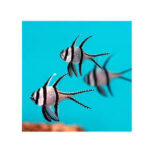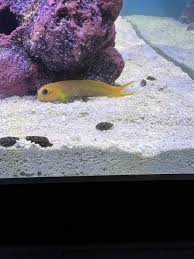In Chinese culture, the dragon (龙, Lóng) is one of the most revered symbols, representing power, protection, wisdom, and transition between life and the afterlife. While dragons are often associated with prosperity and imperial authority, they also play a significant role in funeral rituals and remembrance practices.
From ancient burial customs to modern memorial ceremonies, dragons are seen as guardians of the soul, guides for the deceased, and symbols of ancestral honor. This article explores the presence of dragons in funeral rites, tomb decorations, ancestral worship, and spiritual beliefs, shedding light on their connection to death, transition, and eternal remembrance in Chinese tradition.
1. The Role of Dragons in Ancient Chinese Funeral Rites
1.1. Dragons as Protectors of the Deceased
- In ancient China, it was believed that dragons could guide the souls of the dead to the afterlife.
- Dragon motifs were carved on coffins, tombstones, and burial artifacts to protect the deceased from evil spirits.
- The Eastern Dragon (青龙, Qīnglóng), a celestial guardian, was often invoked in funeral prayers to ensure a peaceful journey for the departed soul.
1.2. Dragon Imagery in Imperial and Noble Burials
- Emperors and high-ranking officials were often buried with jade dragons, golden dragon ornaments, and dragon-engraved tombs.
- The Dragon Throne belief suggested that only rulers who maintained harmony with the spirit of the dragon would have an honorable passage to the afterlife.
- Archaeological findings, such as the tombs of Han dynasty emperors, contain dragon-shaped burial objects, symbolizing continued dominance in the spirit world.
2. Dragons in Traditional Chinese Mourning Practices
2.1. Dragon-Inspired Ancestral Worship
- In Chinese funeral and ancestral remembrance customs, dragons are seen as messengers between the living and the dead.
- Dragon motifs appear on ancestral tablets, altars, and incense burners, reinforcing the connection between past and present generations.
- During Qingming Festival (清明节, Qīngmíng Jié), families burn dragon-patterned joss paper to send wealth and blessings to their ancestors in the spirit world.
2.2. The Dragon’s Role in Taoist Funerary Beliefs
- Taoism teaches that the soul journeys through different realms before reaching ultimate peace, and dragons act as guides in this transition.
- Some Taoist monks perform dragon-inspired calligraphy on white mourning robes, symbolizing protection for the deceased’s soul.
- The Azure Dragon (青龙, Qīnglóng), representing the east, is often invoked in Taoist rituals to lead the departed toward a harmonious reincarnation.
3. The Dragon and Feng Shui in Burial Site Selection
3.1. The “Dragon Vein” (龙脉, Lóngmài) and Auspicious Burial Sites
- According to Feng Shui principles, the location of a grave influences the fortune of future generations.
- Experts use the concept of Dragon Veins (龙脉, Lóngmài)—powerful energy lines in nature—to determine the most favorable burial spots.
- An imperial tomb positioned along a Dragon Vein ensures dynastic prosperity and balance between yin and yang.
3.2. Dragon-Engraved Tombstones for Longevity of Legacy
- Wealthy families engrave dragon images on tombstones to signify strength and eternal remembrance.
- The Nine-Dragon Tombstones found in royal cemeteries represent heavenly blessings upon the deceased’s lineage.
- In Feng Shui, a dragon statue placed near a grave is believed to ward off negative energies and protect the family’s spiritual well-being.
4. Dragons in Buddhist Funerary Traditions
4.1. The Dragon as a Symbol of Enlightenment and Rebirth
- In Chinese Buddhist funeral ceremonies, dragons symbolize the cycle of life, death, and rebirth.
- The Nāga (龙族, Lóngzú), or dragon deities, are revered for their ability to carry prayers from the living to the spiritual realm.
- Monks chant sutras that include dragon references to guide the soul toward enlightenment.
4.2. Dragon Statues in Buddhist Cemeteries
- Some Buddhist temples feature dragon-carved stone lanterns near burial sites to offer spiritual guidance for wandering souls.
- In certain regions, families donate dragon sculptures to monasteries in memory of their ancestors, believing it will bring peace and karmic merit.
5. Dragons in Modern Chinese Memorial Practices
5.1. The Dragon’s Presence in Contemporary Tomb Designs
- While modern cemeteries adopt minimalist designs, dragon engravings are still widely used on family tombs.
- Wealthy individuals commission custom dragon tomb carvings to ensure a strong ancestral legacy.
- Some Chinese diasporas request dragon symbols on cremation urns, maintaining their cultural connection across generations.
5.2. Digital Memorials and Dragon Symbolism
- With technology, many Chinese families now create virtual ancestral halls featuring dragon animations to honor their deceased relatives.
- Some online memorial platforms use dragon graphics to symbolize eternal spiritual guardianship.
6. The Dragon Dance in Funeral and Memorial Ceremonies
6.1. Funerary Dragon Dances in Rural Villages
- In certain Chinese villages, a solemn version of the Dragon Dance is performed at funerals to honor the deceased and drive away malevolent spirits.
- The white dragon, a rare sight in dragon dances, represents mourning and transcendence.
6.2. Commemorative Dragon Dances on Death Anniversaries
- Some families sponsor dragon dances on the anniversary of a loved one’s passing, reinforcing the belief in the dragon’s protective power.
- These performances emphasize that the deceased remains part of the family’s spiritual heritage.
7. Dragons and the Concept of Immortality in Chinese Mythology
7.1. The Dragon as a Bridge to Immortality
- Ancient Chinese legends describe dragons carrying immortals to the heavens, reinforcing their role as celestial guides for the departed.
- The famous Yellow Emperor (黄帝, Huángdì) is said to have ascended to heaven on the back of a dragon, symbolizing a noble end and eternal presence.
7.2. The Dragon Pearl and Spiritual Ascendance
- In some myths, dragons possess a luminous pearl that grants wisdom and guides souls toward enlightenment.
- Certain Taoist priests include dragon pearl imagery in funeral rites, believing it helps the deceased attain spiritual transcendence.
Conclusion: The Timeless Role of Dragons in Chinese Funeral Culture
The dragon’s presence in Chinese funeral customs, tomb designs, ancestral worship, and spiritual beliefs highlights its deep connection to life, death, and remembrance.
From imperial burials to modern digital memorials, the dragon remains a sacred guardian, ensuring the soul’s journey is safe and ancestral heritage is honored.
Whether through Feng Shui principles, Taoist and Buddhist funeral rituals, or commemorative dragon dances, this legendary creature continues to shape the way Chinese society respects and remembers its ancestors, reinforcing the eternal cycle of life and death.










